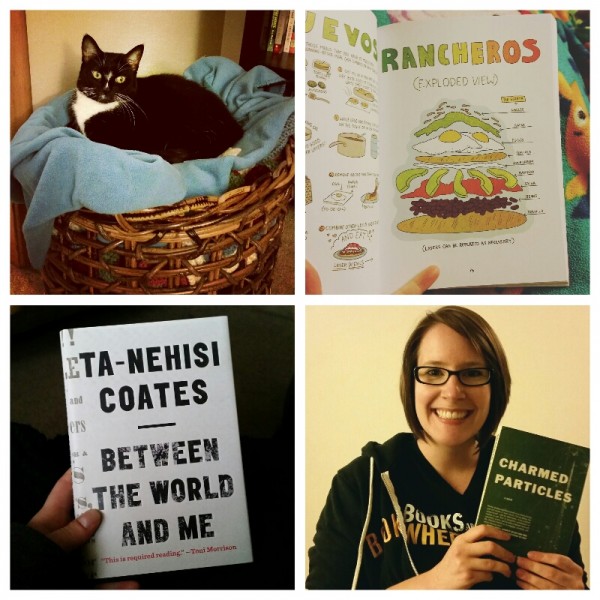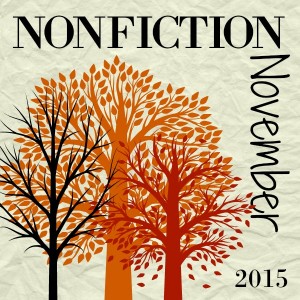 I have to admit, dear readers, that I struggled with this week’s prompt for Nonfiction November. Our host this week is Rebecca (I’m Lost In Books), and our topic is nontraditional nonfiction:
I have to admit, dear readers, that I struggled with this week’s prompt for Nonfiction November. Our host this week is Rebecca (I’m Lost In Books), and our topic is nontraditional nonfiction:
Nontraditional Nonfiction: This week we will be focusing on the nontraditional side of reading nonfiction. Nonfiction comes in many forms. There are the traditional hardcover or paperback print books, of course, but then you also have e-books, audiobooks, illustrated and graphic nonfiction, oversized folios, miniatures, internet publishing, and enhanced books complete with artifacts. So many choices! Do you find yourself drawn to or away from nontraditional nonfiction? Do you enjoy some nontraditional formats, but not others? Perhaps you have recommendations for readers who want to dive into nontraditional formats. We want to hear all about it this week!
I originally wanted to write about nonfiction comic books, but quickly realized I haven’t read nearly enough of them to write anything interesting. So instead I’m going to turn to a form of nonfiction I’m pretty familiar with, essays.
The essay is one of the earliest and most familiar forms of nonfiction, but the advances of online journalism have pushed the noble essay in some interesting new directions. I wrote about this once back in 2012, which means it’s certainly time for an update. Here are a few others that I recommend:
- Navigating Love and Autism by Amy Harmon (New York Times) — I read this piece back in journalism school and was just stunned by it. By today’s standards, the multimedia elements are pretty simple, but they’re still extremely effective.
- Snow Fall: The Avalanche at Tunnel Creek by John Branch (New York Times) — This piece is about a 2012 avalanche at Tunnel Creek. If I remember correctly, it was one early example of how how to incorporate other interactive elements besides video into the essay format online. You can read it online, or purchase the Kindle edition.
- The Black Family in the Age of Incarceration by Ta-Nehisi Coates (The Atlantic) — This really excellent piece is about the impact mandatory minimums and the war on drugs have had on, specifically, black families. I love the way the essay uses footnotes and annotations to add to the piece.
- Valal Morghulis (All Men Must Die) by Shelly Tan and Alberto Cuadra (Washington Post) — This is the most non-traditional piece of the bunch, an interactive infographic explaining all 456 deaths in the first four seasons of Game of Thrones on HBO. It’s super easy to get lost in this one. And, duh, spoilers abound.
Programming Notes
- This week’s host is Rebecca (I’m Lost In Books), so make sure to visit her blog to link up your post for the week.
- If you’re talking about Nonfiction November on Twitter, please use the hashtag #nonficnov for your posts so we can find them. The hashtag seems a little crowded this year, but we’ll just make it work.
- Our topic next week is our readalong of I Am Malala hosted by Katie (Doing Dewey). Katie will have some questions posted, as well as a place to link up other posts on the book.

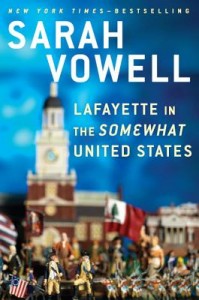 I’m not sure I would have gotten to reading Sarah Vowell’s newest book, Lafayette in the Somewhat United States, if I haven’t started listening to the soundtrack for Hamilton just a couple weeks ago.
I’m not sure I would have gotten to reading Sarah Vowell’s newest book, Lafayette in the Somewhat United States, if I haven’t started listening to the soundtrack for Hamilton just a couple weeks ago.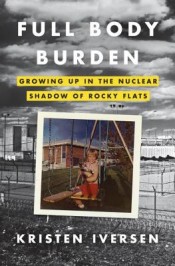 Full Body Burden by Kristen Iversen
Full Body Burden by Kristen Iversen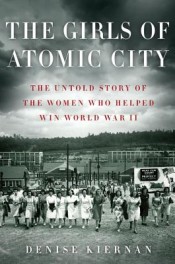 The Girls of Atomic City by Denise Kiernan
The Girls of Atomic City by Denise Kiernan Leaving Orbit by Margaret Lazarus Dean
Leaving Orbit by Margaret Lazarus Dean